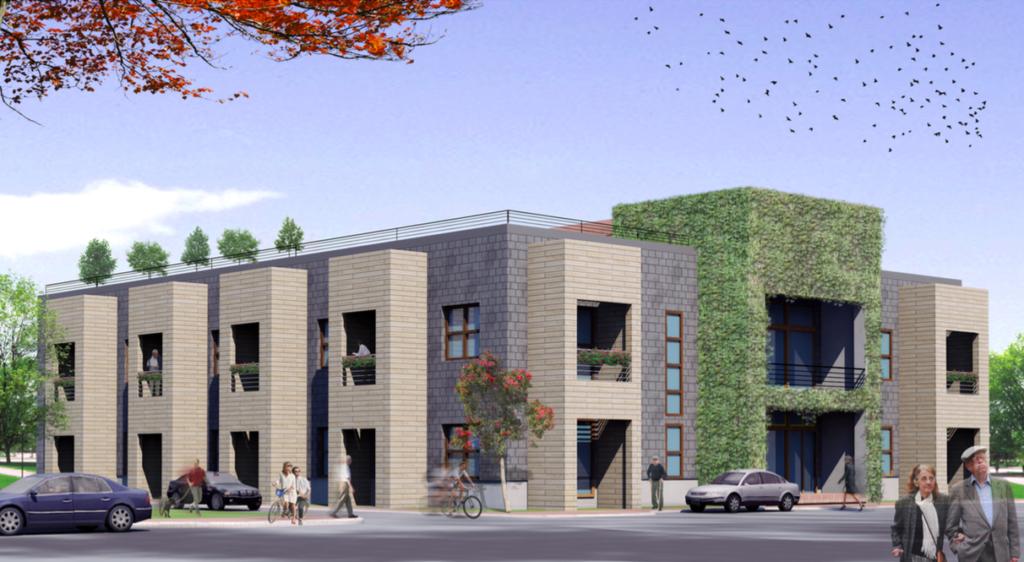A growing movement among U.S. seniors to create their own retirement communities might seem to be a threat for senior living providers — after all, this trend is driven in part by people who want to avoid moving into existing facilities. But this might be a classic case of turning lemons into lemonade, as forward-thinking operators could gain a competitive edge by finding ways to work with these groups of enterprising older adults.
Seniors are adopting numerous different models as part of this do-it-yourself housing movement, several of which were highlighted recently by U.S. News and World Report. The models include Golden Girls-style roommate arrangements and “pocket neighborhoods” of seniors living in separate houses but providing support for each other.
Sometimes, the models more closely resemble a typical senior living community.
That’s the case in Chattanooga, Tenn., where a group of like-minded seniors formed Chattanooga Collaborative Senior Housing about four years ago. Now 10 strong — four couples and two single people — the group is working to construct a building where they will live together.
The concept is to have eight units around a central core, member Jay Ku tells SHN. Each unit would have a bedroom, kitchenette and bathroom; everyone would share the larger common spaces in the building, encouraging socialization and fostering a supportive environment. The idea is that as residents of the building need help as they get older, they will be able to come to each other’s aid.
The Collaborative came together around a shared vision of aging: All the members are interested in maintaining their independence and autonomy as long as possible, with more equity in their housing and control over their lifestyle than they believe would be afforded in an assisted living community or similar environment.
Yet, while it may seem that senior living providers are the enemy for groups like Chattanooga Collaborative Senior Housing, there could be room for alliances.
Finding Common Ground
When asked if existing senior living operators could play some part in projects like theirs, Ku is not entirely dismissive. And some provider organizations see the potential for growing their business by working with groups like the Chattanooga Collaborative.
“I do think that there is an opportunity,” says Terri Cunliffe, current COO and incoming CEO of Chicago-based Covenant Retirement Communities, one of the nation’s largest not-for-profit senior services providers, with 5,000 residents at 15 retirement communities offering the full continuum of care.
In particular, organizations such as Covenant might be able to partner with self-made retirement communities to provide for residents’ health care needs, Cunliffe tells SHN. This might take the form of home health services or telehealth monitoring.
Ku does see an opportunity in this area for existing providers. The residents of the Chattanooga development intend to provide crucial support for each other, but they also would be responsible for obtaining home health care or similar services should the need arise.
Senior living operators also might be able to help provide housekeeping services, meals and facility upkeep, Cunliffe says.
“All of us have relationships with vendors,” she says. “Plumbing, electrical, roofing contractors. We could extend some of those services to those communities through partnerships.”
Senior living companies, or the sector’s development and real estate firms, might also have a role as an investor or landlord for buildings like the one being planned in Chattanooga. There, some of the members put up the money for the land, but the Collaborative currently is looking for investors to help finance the project.
While autonomy is a watchword for the members, they also are keeping an open mind about what it will take for the project to succeed, Ku says. A senior living company probably would want more control over how a building is run than the Collaborative would be comfortable with, Ku surmises, but that does not mean that the members are dead-set on managing the building entirely on their own.
For instance, if a developer gets involved and wants to manage the property — having management fees as a revenue source along with rents on some of the units that aren’t bought outright — that might be under consideration, Ku says.
Inspiring New Offerings
Even if senior living providers don’t directly work with homegrown retirement communities, they might look to these projects for inspiration in how to broaden their offerings.
The Chattanooga group already has purchased land in the city’s Southside area, which has flourished in recent years and features numerous amenities. One reason the group is pursuing the project is because the members want to live in this type of urban environment and did not see existing senior living options that were attractive, Ku says.
Recognizing that this type of demand could grow, Covenant is considering offering independent living rentals in urban settings separate from the company’s main campuses, which like most CCRCs are by and large in more suburban settings.
“I think senior living providers are going to have to be more creative about where they locate,” Cunliffe says.
However, market studies have to bear out the business case — if only a handful of seniors want to live in a given urban area, it might make more sense for Covenant to provide services to them rather than construct rental properties, Cunliffe adds.
The importance of autonomy, especially to Baby Boomers, is another major lesson for providers to learn from the growing do-it-yourself retirement community movement, says Cunliffe.
“We cannot be paternalistic,” she says of the senior living industry. “The first [organizations] that can figure out how to integrate that individualism, to allow seniors to impact their environment without management losing control of the business, will be the most successful.”
Written by Tim Mullaney
Companies featured in this article:
Chattanooga Collaborative Senior Housing, Covenant Retirement Communities


